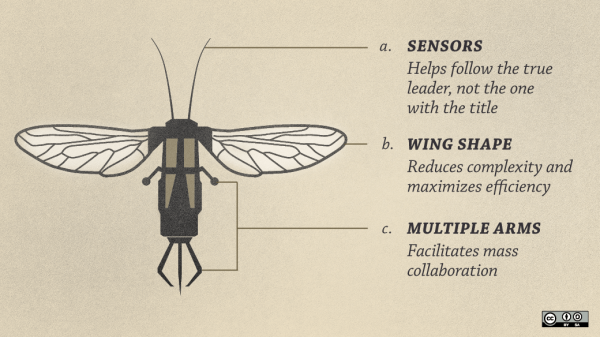Biotechnology is a rapidly developing field with many exciting advances such as the da Vinco surgical system. One of the more unexpected applications of this interaction between technology and biology comes from the “RoboBee Project,” whose goal is to create autonomous robotic insects capable of independent sustained flight.
Although laughable at first glance, the RoboBee has many invaluable uses, such as participation in reconnaissance missions, assistance in remote communications, and even as artificial pollinators. The more recent models, however, have added even more features to the RoboBee, delving beyond what’s physically possible for a real bee. For instance, in April 2016, a team of scientists led by Dr. Robert Wood presented that the RoboBee can perch during flight to conserve energy, a mechanism that is employed by creatures such as bats, birds, and butterflies.
Image Source: Adam Gault
By using an electrode patch that takes advantage of electrostatic adhesion, the researchers created a mechanism wherein the RoboBee can stick to almost any surface, ranging from glass to wood to a leaf. Furthermore, because this perching mechanism requires about 1,000 times less power than hovering, the operating life of the RoboBee has been drastically increased.
Although, much like the RoboBee itself, this recent development doesn’t look all that exciting, Dr. Wood explains how this perching mechanism can open doors to militaristic usages of the RoboBee: “Aerial microrobots have enormous potential for large-scale sensor deployment to inaccessible, expansive and dangerous locations. However, flight is energy-intensive, and the limitations of current energy storage technologies severely curtail in-air operations,” said Jordan Berg, an NSF program director familiar with the project. “Because the capabilities of flying insects far exceed those of similarly sized machines, many researchers seek design inspiration from nature. NSF-funded projects such as this one show that innovative solutions can arise from exploiting a synergy between biological ends and engineered means.”
However, the team is not done yet; the latest model of the RoboBee can now swim, and the team is currently working on a more sentient model of RoboBee that can sense its environment using lasers. The RoboBee has an infinite range of applications in fields such as the military and agriculture, and by improvements to its already-revolutionary design, the team is opening more and avenues for the RoboBee.
Feature Image Source: “Robobees, swarms, and the power of the collective” by opensource.com is licensed under CC BY-SA 2.0










